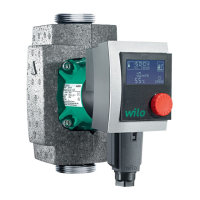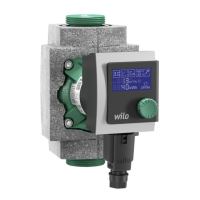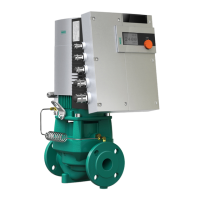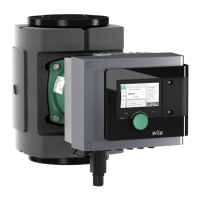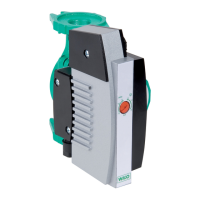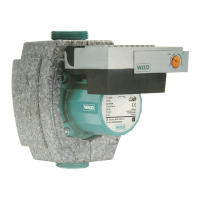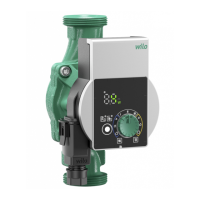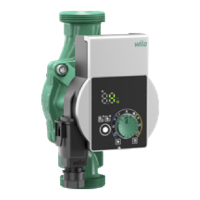en Installation and electrical connection
10 WILO SE 2021-12
6.2 Electrical connection
DANGER
Risk of fatal injury from electrical voltage!
Immediate risk of fatal injury if live components are touched.
• Before commencing work, switch off the power supply and secure it from being
switched on again.
• Never open the control module and never remove operating elements.
CAUTION
Pulsed mains voltage can cause damage to electronic components.
• Never operate the pump with phase angle control.
• When switching the pump on or off using an external control unit, deactivate any
voltage pulse (e.g. phase angle control).
• For applications where it is not clear whether the pump is operated with pulsed
voltage, get the control/system manufacturer to confirm that the pump is oper-
ated with sinusoidal ACvoltage.
• Switching the pump on/off via triacs/solid-state relays must be examined on a
case-by-case basis.
6.2.1 Preparation
ƒ The current type and voltage must correspond to the specifications on the rating
plate.
ƒ Provide maximum back-up fuse: 10A, slow-blow.
ƒ If a residual-current device (RCD) is used, it is recommended to use an RCD type A
(pulse current sensitive). Check that the rules for the coordination of electrical
equipment in the electrical installation are observed and, if necessary, adjust the
RCD accordingly.
ƒ Only operate the pump with sinusoidal ACvoltage.
ƒ Observe the switching frequency:
– Switch-on/off procedures via mains voltage ≤100/24h.
– ≤20/h for a switching frequency of 1min. between switching on/off via mains
voltage.
NOTICE
The inrush current of the pump is <5A. If the pump is switched “on” and “off” via a
relay, it must be ensured that the relay is capable of switching an inrush current of at
least 5A. If necessary, obtain information from the boiler/control unit manufacturer.
ƒ The electrical connection must be made via a fixed connecting cable equipped with
a connector device or an all-pole switch with a contact opening width of at least
3mm (DINEN60335-1).
ƒ Use a connecting cable with sufficient outer diameter (e.g. H05VV-F3G1.5) to pro-
tect against leaking water and to ensure strain relief on the threaded cable con-
nection.
ƒ Use a heat-resistant connecting cable where fluid temperatures exceed 90°C.
ƒ Ensure that the connecting cable does not touch the pipes or the pump.
6.2.2 Connecting the pump
Installing the Wilo-Connector
ƒ Disconnect the connecting cable from the power supply.
ƒ Observe the terminal assignment (PE, N, L).
ƒ Connect and install the Wilo-Connector (Fig.5a to 5e).
